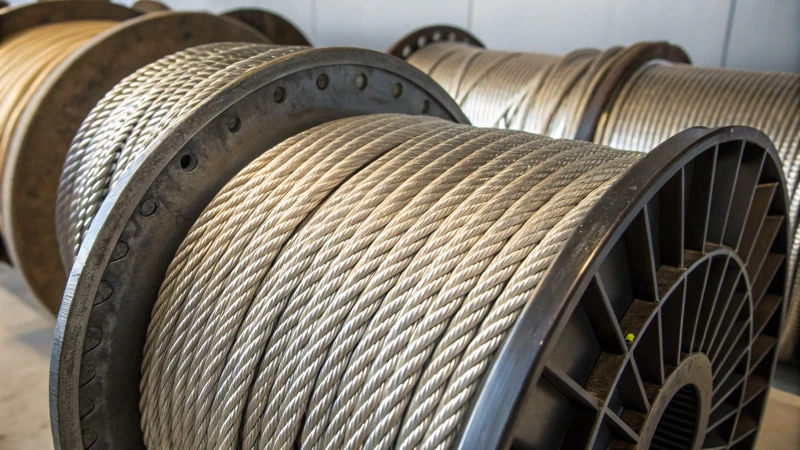
Imagine a world where steel wire ropes are tailored to your every need, ensuring safety and reliability in the toughest conditions.
To customize the breaking strength and load capacity of steel wire ropes, I focus on choosing the right materials, optimizing construction, and leveraging advanced manufacturing techniques. These steps help meet specific needs, ensuring safety and performance for any application.
I remember the first time I had to select the right steel wire rope for a major project; it felt like solving a complex puzzle. You see, understanding material properties, construction types, and modern manufacturing techniques is crucial. For instance, selecting high-strength steel or stainless steel depending on the environment can make all the difference. Each decision impacts how the rope performs under load—whether it’s dealing with dynamic forces or static weights. It’s a bit like crafting a bespoke suit; every detail matters to ensure it fits perfectly and performs impeccably.
Steel wire ropes can be customized for specific applications.True
Customization involves selecting materials and construction to meet application needs.
All steel wire ropes have the same breaking strength.False
Breaking strength varies based on material selection and construction techniques.
What Makes Some Ropes Perform Better Than Others?
Ever wondered what makes some ropes perform better than others? The secret lies in the materials chosen for their construction. Let's dive into the world of ropes and uncover the best materials for top-notch performance.
For optimal rope performance, select high-strength materials like molybdenum-alloy steel for its load capacity and stainless steel for its corrosion resistance. Tailoring wire construction to specific needs further enhances durability and efficiency.
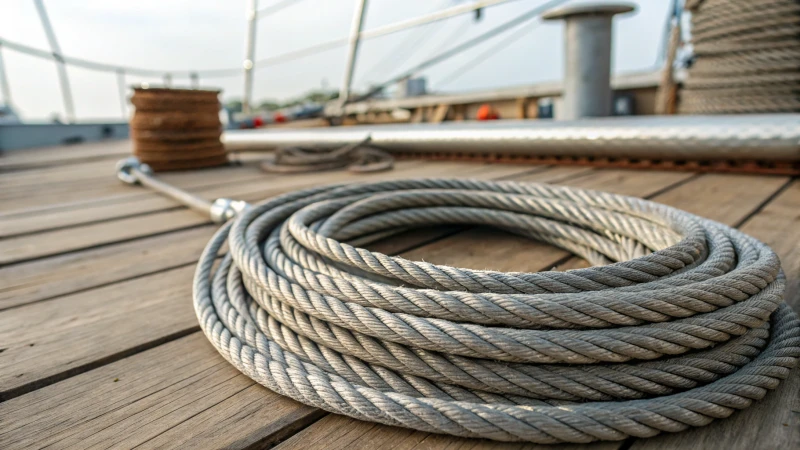
High-Performance Material Selection
I remember the first time I had to choose a rope for a big project—it felt like trying to pick the perfect dessert from an endless buffet. That's when I learned about molybdenum-alloy steel. It's like the superhero of materials, boasting an impressive breaking strength up to 1960 MPa. This makes it perfect for those nail-biting high-load situations, like when you're hoisting hefty loads with construction cranes. But, if you're like me and work near water, stainless steel ropes, especially those made from AISI 316, are a game-changer due to their rust-busting abilities in marine environments1.
Optimization of Wire Rope Construction
Picture this: you're in the middle of a project, and your rope just isn’t cutting it. That's when understanding rope construction comes into play. I've found that a 6x19 structure is my go-to for dynamic loads because it's flexible and strong, like a yoga instructor with biceps! On the flip side, if you're dealing with static loads, an 8x36 structure might be your best friend, boosting wear resistance by about 12% at the same diameter.
| Construction Type | Key Features | Suitable Use Cases |
|---|---|---|
| 6x19 | High flexibility and strength | Dynamic loads like lifts |
| 8x36 | Enhanced wear resistance | Static loads in cranes |
Customized Design for Enhanced Safety
When it comes to heavy-duty applications, I never compromise on safety. I learned early on that wire ropes often need to meet safety factors of 5-6, per ISO 2408 standards. By tweaking the rope's diameter and material composition, you can ensure it holds up under pressure. For instance, a 20mm diameter rope with a 6x safety factor can comfortably support a whopping 10 tons in construction lifting2.
Innovative Manufacturing Techniques
I'm always on the lookout for innovation that makes life easier. Techniques like micro-drawing are incredible—they can increase a rope's breaking strength by 10%-15%. Plus, precision heat treatment does wonders by optimizing the rope's internal structure, making it more uniform and capable of handling hefty loads.
Understanding these elements has helped me make informed decisions about rope procurement, ensuring that I choose materials that meet both performance and safety standards in my field.
Molybdenum-alloy steel ropes break at 1960 MPa.True
Molybdenum-alloy steel is noted for its high breaking strength.
6x19 rope structure is best for static loads.False
6x19 is preferred for dynamic loads due to flexibility and strength.
How does wire rope construction influence strength and load capacity?
Have you ever wondered why wire ropes vary so much in strength and flexibility? It's all in the construction.
Wire rope construction influences strength and load capacity through the choice of materials, diameter, and strand configuration. High-strength steel boosts tensile strength, while configurations like 6x19 and 8x36 impact flexibility and wear resistance.
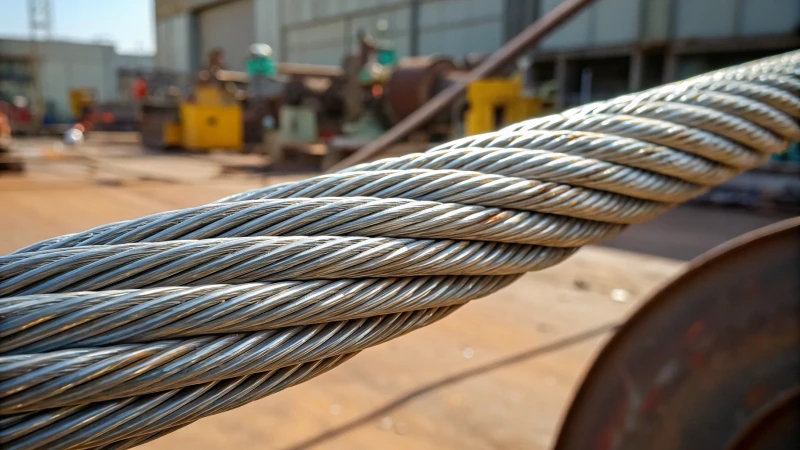
I remember when I first got involved in the construction industry; the sheer variety of wire ropes available was overwhelming. As I dug deeper, I realized that each type of wire rope was designed with specific tasks in mind, from lifting massive beams to ensuring safe elevator rides. It’s fascinating how different materials and configurations can drastically alter a rope’s performance.
Material Selection
Choosing the right material is like picking the best tool for the job. For instance, high-strength steel, such as molybdenum-alloy steel, can offer tensile strengths reaching up to 1960 MPa. I once worked on a project near the coast where we needed ropes that could withstand the salty air; stainless steel like AISI 3163 was perfect due to its corrosion resistance.
Wire Rope Configurations
Configurations are another piece of the puzzle. The way ropes are constructed affects how they handle different stresses. Common constructions include:
| Configuration | Characteristics | Applications |
|---|---|---|
| 6x19 structure4 | High flexibility | Dynamic loads, cranes |
| 8x36 | Improved wear resistance | Static loads, elevator systems |
I remember recommending a 6x19 structure for a dynamic load situation because of its flexibility. In contrast, for more static applications, the 8x36 configuration has been my go-to due to its enhanced wear resistance.
Diameter and Safety Factors
Adjusting diameter and composition can significantly enhance safety. Imagine using a 20mm diameter rope with a 6x safety factor to confidently lift up to 10 tons in a construction setting.
Manufacturing Techniques
Thanks to innovative manufacturing techniques like micro-drawing and precision heat treatments, breaking strength can be increased by up to 15%. These techniques refine the internal metallurgical structure, boosting both uniformity and load capacity.
Testing and Quality Standards
Rigorous testing ensures that wire ropes meet international standards such as ISO 2408 and EN 12385. Reviewing comprehensive testing reports5 gives me peace of mind that a rope will perform reliably under specified conditions. This level of assurance is crucial, especially when safety is on the line.
High-strength steel wire ropes reach 1960 MPa tensile strength.True
Molybdenum-alloy steel can achieve tensile strengths up to 1960 MPa.
8x36 wire rope configuration is ideal for dynamic loads.False
The 6x19 configuration is better suited for dynamic loads due to flexibility.
How Do Manufacturing Techniques Customize Wire Ropes?
Ever wondered how wire ropes are tailored to tackle the toughest jobs?
Manufacturing techniques are essential for customizing wire ropes to fit specific needs by adjusting materials, construction patterns, and mechanical properties. Techniques like advanced drawing, heat treatment, and precision testing optimize strength, flexibility, and durability, ensuring wire ropes are up to any task.
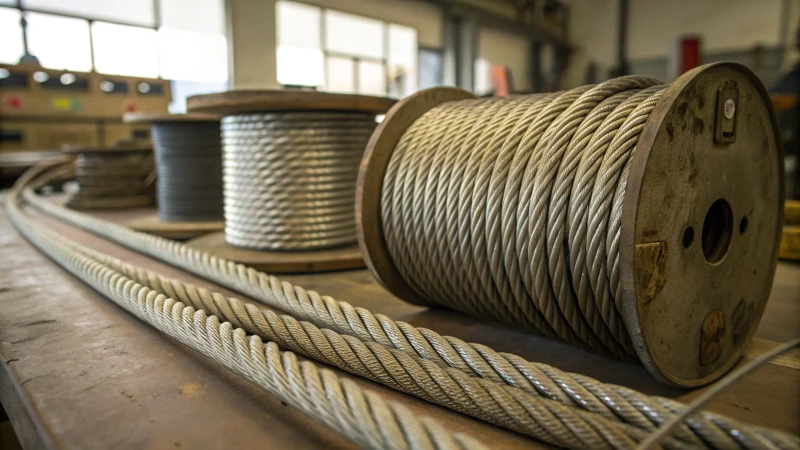
I remember the first time I truly appreciated the intricacies of wire rope customization. It was during a construction project where we needed ropes that could handle heavy loads without faltering. That experience taught me how pivotal advanced manufacturing techniques are in crafting these essential tools.
Advanced Drawing Techniques
Modern wire ropes benefit from cutting-edge drawing methods like micro-drawing. These techniques enhance mechanical properties, boosting breaking strength by 10%-15%. This process is crucial for high-load applications requiring superior strength6. Imagine needing that extra strength when hoisting beams on a windy day; it's a game-changer for high-load tasks.
Precision Heat Treatment
Heat treatment optimizes the internal structure of wire ropes. This method ensures uniformity and increases load capacity, vital for scenarios where reliability is paramount. For instance, in marine environments7, heat-treated ropes withstand corrosion and stress better than others.
Custom Construction Patterns
Different wire rope constructions, like 6x19 or 8x36, influence breaking strength and load distribution. A 6x19 structure8 offers high flexibility, ideal for dynamic loads, whereas 8x36 provides enhanced wear resistance for static loads.
| Construction Type | Ideal Use Case | Key Benefits |
|---|---|---|
| 6x19 | Dynamic loads | Flexibility & Strength |
| 8x36 | Static loads | Wear Resistance & Durability |
Rigorous Testing Protocols
Wire ropes must undergo stringent testing to ensure they meet international standards such as ISO 2408. Tensile and fatigue tests9 validate their performance against expected loads, ensuring consistency between actual and design specifications.
Material Selection and Safety
Choosing the right materials is pivotal in customization. High-strength steels like molybdenum-alloy provide excellent breaking strength. In corrosive environments, stainless steel10 ropes are preferred for their resistance to degradation.
Safety Factors in Design
In heavy-duty applications, wire ropes are designed with safety factors of 5-6. Manufacturers can adjust the rope's diameter and material composition to cater to specific working loads, ensuring reliability in high-stress scenarios like construction lifting11. Knowing this has always given me peace of mind on challenging projects.
Micro-drawing enhances wire rope breaking strength by 15%.True
Micro-drawing techniques improve mechanical properties, boosting breaking strength by 10%-15%.
6x19 wire ropes are best for static load applications.False
6x19 wire ropes offer high flexibility, ideal for dynamic loads, not static ones.
How Can Safety Standards Be Maintained While Enhancing Rope Specifications?
Ever wonder how you can boost rope performance without compromising on safety?
To balance safety and enhance rope specifications, focus on using high-performance materials, refining construction designs, and sticking to strict testing standards. This ensures ropes meet both the performance and safety benchmarks.
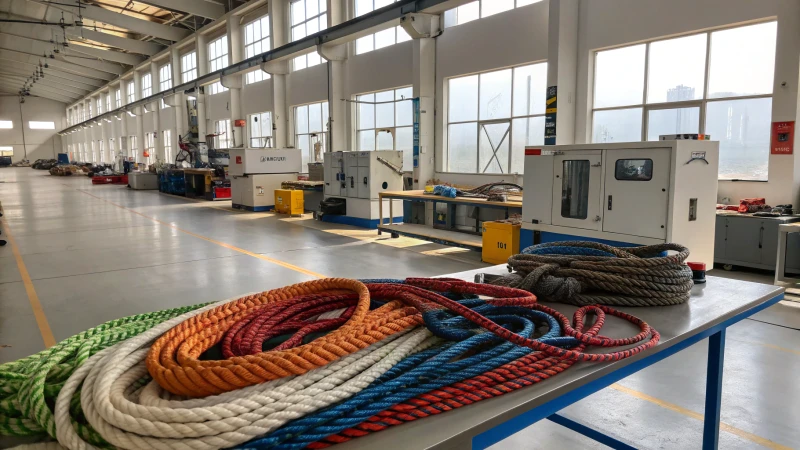
I remember the first time I realized just how vital the right rope could be—it was during a hefty construction project where every detail mattered. As I stood there, watching the crane lift massive beams into place, I couldn't help but think of all the unseen elements that make such feats possible. The ropes bore the weight of not just materials, but also our trust in their integrity.
High-Performance Material Selection
Choosing the right material is more than just a technical decision; it’s about ensuring safety and reliability. Think of high-strength steels, like molybdenum-alloy steel. I’ve seen firsthand how these materials stand up to intense loads and pressures, ensuring we can push boundaries safely. For marine environments, stainless steel ropes, like AISI 316, are lifesavers with their corrosion-resistant properties12. Their durability in harsh conditions never ceases to impress me.
Optimization of Wire Rope Construction
The design of wire ropes is akin to crafting the perfect recipe—each component must harmonize to achieve the desired outcome. Structures like 6x19 or 8x36 have unique advantages. I recall a project where a switch to the 8x36 design added significant wear resistance, making a huge difference in long-term performance. It’s fascinating how small changes in construction can elevate a rope's strength by around 12%, all while maintaining the same diameter.
Below is a simple comparison table illustrating these differences:
| Construction | Strength | Flexibility | Wear Resistance |
|---|---|---|---|
| 6x19 | High | High | Moderate |
| 8x36 | Higher | Moderate | High |
Customized Design for Enhanced Safety
Customization allows us to tailor solutions that fit like a glove. In heavy-duty applications, ensuring a safety factor of 5-6 (per ISO 2408) isn’t just a guideline; it’s peace of mind. Imagine a 20mm diameter rope effortlessly supporting a 10-ton load13—this is the kind of reliability that we strive for.
Innovative Manufacturing Techniques
Advanced techniques, like micro-drawing and precision heat treatment, feel like magic to me. They can boost breaking strength by up to 15%14 and enhance uniformity, making every project feel a bit more secure and efficient. Seeing these innovations in action is always a reminder of how far technology has come.
Testing and Quality Certification
Adhering to international standards such as ISO 2408 or EN 12385 is crucial. The detailed reports from tensile and fatigue tests assure us that our enhancements don’t compromise safety. It’s these meticulous processes that solidify our trust in what we use every day.
By weaving together high-performance materials, optimized construction, and cutting-edge techniques, we can enhance rope specifications while steadfastly adhering to safety standards. This holistic approach guarantees performance improvements without sacrificing essential safety requirements.
For more insights on maintaining safety standards in rope specifications, explore technical guidelines15 specific to your industry needs.
Molybdenum-alloy steel ropes excel in marine environments.False
Stainless steel, not molybdenum-alloy steel, excels in marine settings.
8x36 wire rope construction increases breaking strength by 12%.True
Testing shows 8x36 structure enhances breaking strength by 12%.
Conclusion
Customize steel wire ropes by selecting high-strength materials, optimizing construction types, and employing advanced manufacturing techniques to enhance breaking strength and load capacity for various applications.
-
Learn how stainless steel ropes resist corrosion in harsh marine conditions, ensuring longevity and reliability. ↩
-
Explore how safety factors influence the design and selection of ropes for secure construction lifting operations. ↩
-
Learn about the corrosion-resistant properties of AISI 316 stainless steel that make it ideal for marine environments. ↩
-
Explore why the 6x19 wire rope structure is favored for its flexibility in dynamic load applications. ↩
-
Understand the significance of testing reports in ensuring wire ropes meet international safety standards. ↩
-
Explores how micro-drawing enhances the mechanical strength of wire ropes, beneficial for high-load applications. ↩
-
Details how heat treatment improves wire rope durability in corrosive marine environments. ↩
-
Examines the benefits of 6x19 wire rope construction for dynamic load applications. ↩
-
Provides insights into the importance of tensile and fatigue testing in ensuring wire rope quality. ↩
-
Highlights the advantages of stainless steel wire ropes for corrosion resistance. ↩
-
Explains the use of safety factors in designing wire ropes for construction lifting applications. ↩
-
Understanding AISI 316's corrosion resistance helps in choosing materials that perform well in harsh environments. ↩
-
Learning about advanced techniques enhances knowledge on increasing load capacity without compromising safety. ↩
-
Exploring this link provides detailed insights into the strength characteristics of molybdenum-alloy steel, aiding in selecting suitable materials. ↩
-
Accessing this link provides industry-specific guidelines to maintain safety while enhancing rope performance. ↩

